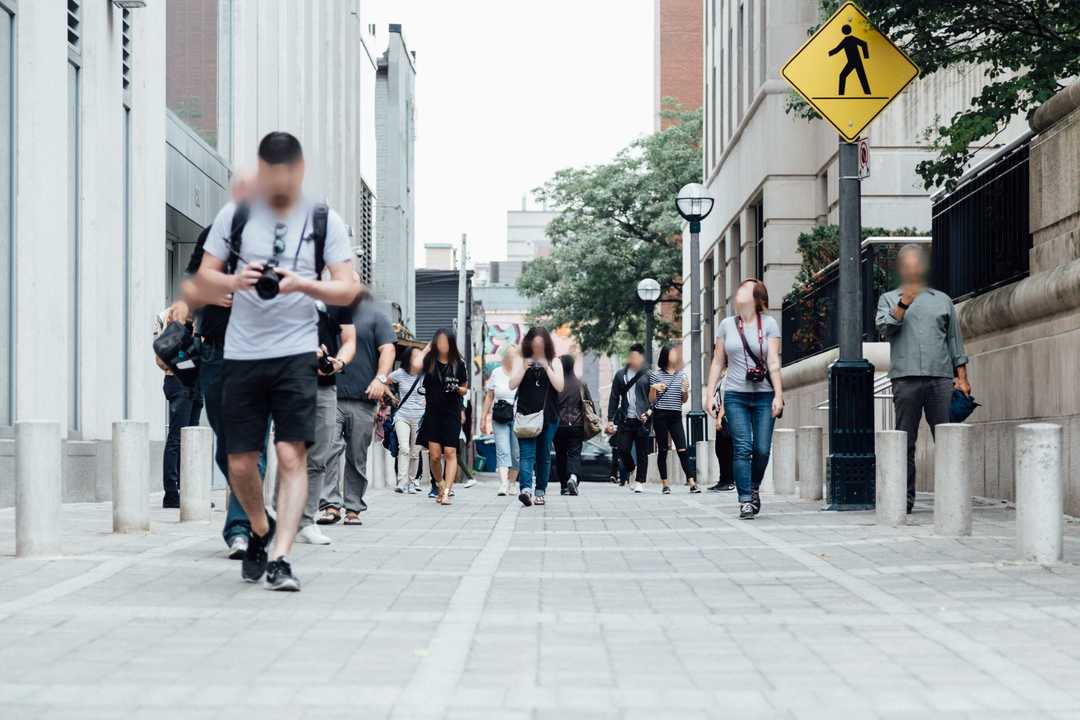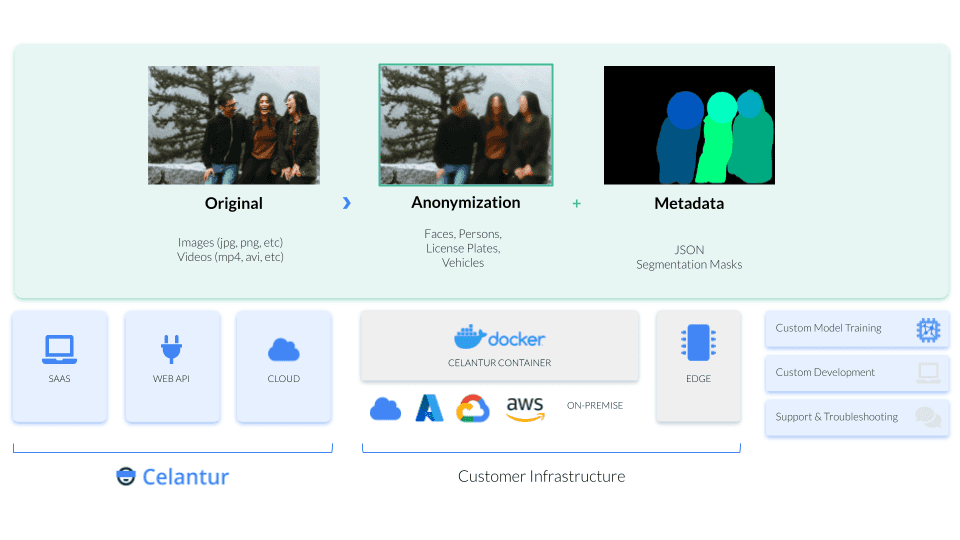How to Redact Faces on Images and Videos
Learn about the process of image and video redaction for data privacy compliance with insights on methods like blurring, pixelation, and more. Discover the advantages of AI-based solutions and Celantur's industry-leading technology.
15 September 2023, by Mario Sabatino RiontinoAsk a question

Ensuring the protection of personal data in images and videos has become a critical consideration for use cases where extensive collections of image and video data are required – such as autonomous driving, mapping, ALPR, video surveillance, etc. Whether you're collecting or storing image and video data, or building software that processes faces, understanding how to effectively redact faces is essential.
This article is designed to provide insights into the process of redacting faces for practical applications. We'll explore why this is crucial, analyze various techniques, and discuss the implications of different redaction methods.
Why Redacting Faces Matters
The need to redact faces from images and videos arises from multiple factors:
- Data Privacy Regulations: Stringent data protection laws, such as GDPR in Europe and CCPA in California, mandate the protection of individuals' privacy. Failing to comply can lead to hefty fines and damage to an organization's reputation.
- Ethical Concerns: As awareness of privacy rights grows, individuals are increasingly concerned about how their data is used. Companies that respect these concerns build trust with their customers.
- Security: In some cases, redacting faces is necessary to protect sensitive information, such as law enforcement or military operations, to prevent unauthorized access.
Pros and Cons of Different Redaction Methods
There are various methods to redact faces, each with its own advantages and disadvantages:
- Blackening: This method completely obscures the face with a solid color (usually black). While it's effective at redacting identities, it can appear intrusive and unnatural in the final image or video. Importantly, blackening is the least reversible option, making it suitable for cases where data protection is of utmost concern, even at the cost of visual aesthetics.
- Pixelation: Pixelation requires replacing the face with a mosaic of pixels. It strikes a balance between anonymity and retaining some visual context. However, it's worth noting that pixelation is relatively easier to reverse for those with the right tools or expertise.
- Blurring: Blurring is a widely favored choice as it effectively anonymizes faces while preserving the overall aesthetics of the image or video. It is less visually intrusive than blackening and offers a better trade-off between reversibility and visual appearance. This makes blurring a commonly preferred method in various scenarios, striking a balance between privacy and usability.

Celantur’s software uses blurring as a standard blurring method because it balances reversibility, computing processing, and visual appearance. Our solution applies a non-linear median blur multiple times with different kernel sizes. Due to the high loss of pixel information, de-anonymizing is practically impossible. However, we also offer other methods for particular applications.
You can learn more about how we ensure the irreversibility of our anonymization process by visiting this link.
Implications of Different Deployment Methods
If you are here, I assume you've made the decision or are contemplating the use of an AI-based solution for face redaction over manual or semi-automated methods. Using AI-based anonymization for face redaction offers advantages such as speed, accuracy, scalability, and cost-efficiency compared to manual methods, making it the preferred choice for organizations seeking efficient and precise personal data protection in images and videos.
Whether you choose a SaaS service, an API service, or an on-premise deployment for face redaction, each has its implications:
- SaaS Service: Using a Software as a Service (SaaS) solution offers ease of use and scalability. All you need is an internet connection and browser, making it suitable for organizations of all sizes. However, it may have ongoing subscription costs or bandwidth limitations.
- API Service: An API-based solution allows for integration into existing workflows and applications. It provides scalability and various integration opportunities within your application, software stack, or workflow, but may require more technical expertise to implement.
- On-Premise: Hosting the redaction solution on-premise gives you complete control over your data but requires infrastructure setup and maintenance. It's ideal for organizations with stringent security requirements.
Is 100% anonymization required?
From a legal standpoint, it's crucial to comply with data protection regulations like the GDPR. The EU Article 29 Working Party's Opinion 05/2014 on Data Anonymisation Techniques provides valuable guidance. This opinion acknowledges that achieving complete anonymization of personal data is challenging, even with advanced techniques. It underscores the importance of considering the current state of technology when assessing the effectiveness of anonymization.
“[...] the outcome of anonymization as a technique applied to personal data should be, in the current state of technology, […]”
In the field of data anonymization, achieving 100% accuracy is indeed a complex and elusive goal. This is true for various reasons:
- Diverse Edge Cases: Real-world scenarios present countless edge cases and variables that can make achieving complete anonymization extremely challenging. Factors like varying lighting conditions, angles, and facial expressions introduce complexities.
- Constantly Evolving Technology: While technology has advanced significantly, it's an ongoing process. Even tech giants like Google face challenges in achieving perfect accuracy in face and license plate detection, as evidenced by occasional failures in services like Google Maps.
- Balancing Accuracy and Speed: Striking a balance between high accuracy and speed is essential.
How Celantur can help you with this
Celantur supports a range of redaction methods, including blackening, pixelating, and blurring, allowing organizations to choose the most suitable technique for their specific needs. We offer a SaaS service, an API for seamless integration into existing workflows, and on-premise software for complete control over data handling.
What truly sets Celantur apart is its industry-grade detection rate, powered by cutting-edge AI technology. We excel at accurately identifying faces and other objects like persons, license plates, and vehicles.

Discover some of our success stories:
- NavVis: Read Success Story
- Horus: Read Success Story
- Fortune 500 Tech Company (Self-Driving Vehicles): Read Success Story
Ask us Anything. We'll get back to you shortly